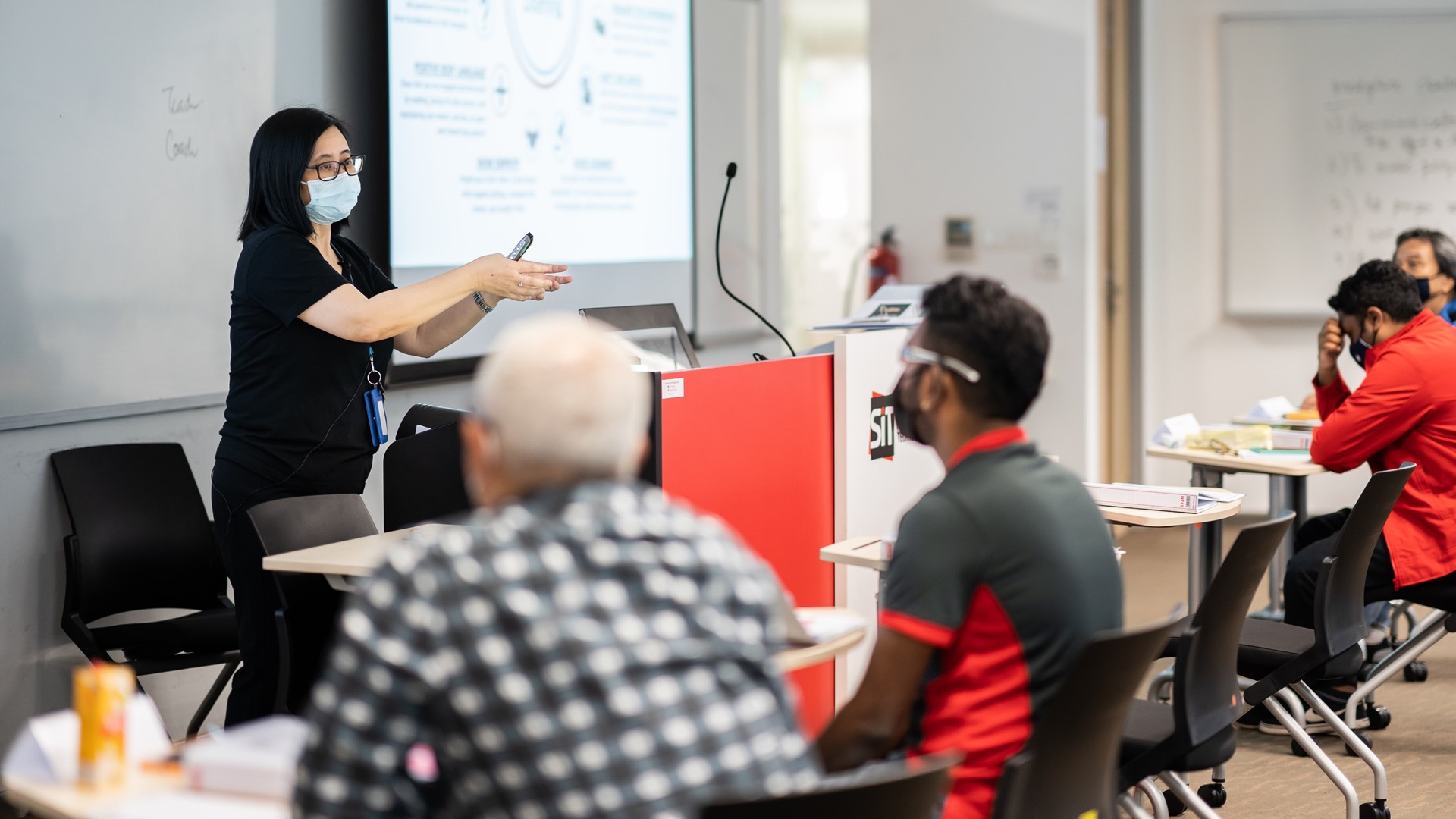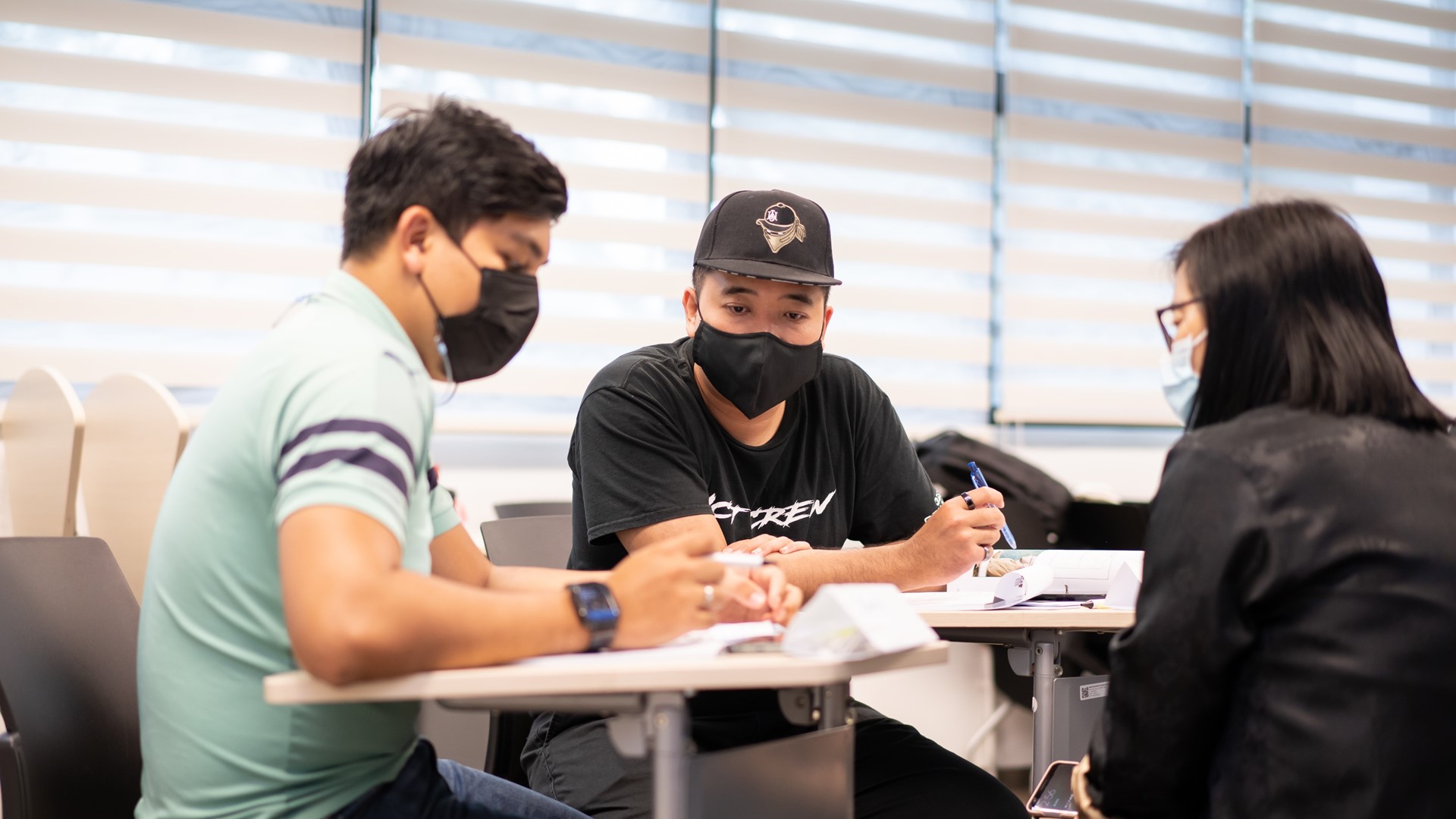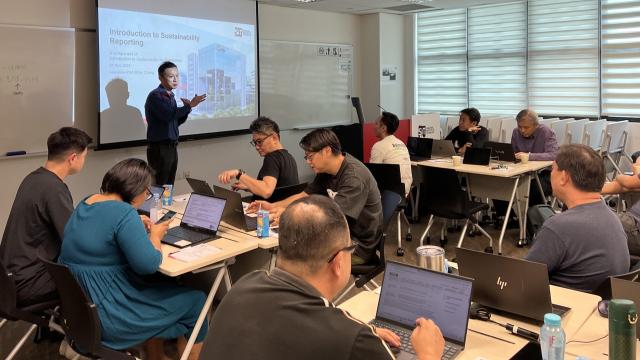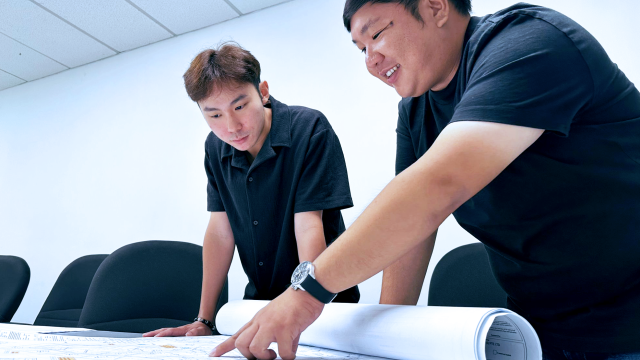The Corporate Mentoring and Coaching training programme aims to develop workplace mentors, who play an integral role in cultivating workplace learning culture.
If Ms Emily Woo had to pick her two favourite words, it would be “What else?”.
As an adult educator who runs courses on mentorship in the workplace, the two-word question is short, sweet, and powerful. It drives people to think deeper for solutions to the challenges they face. As a personal rule, she always asks for at least three ideas.
“One is never enough; two is neither here nor there. So, you need at least three,” she explained.
The question is a quick and effective way to get people to propose actionable items after the coachee has identified a problem statement. This technique encourages people to think critically and then be problem solvers, which is particularly useful in the workplace.
A Universal Toolbox
As a Lead Professional Officer at the Singapore Institute of Technology, Ms Woo helms the National Centre of Excellence for Workplace Learning (NACE@SIT)‘s Corporate Mentoring and Coaching Trainer Course. She teaches adult learners to be more effective mentors and coaches as trainers in the workplace.

Emily (standing) helms the Corporate Mentoring and Coaching Trainer Course for adult learners. (Photo: Tan Eng Keng)
An effective mentor is one who can inspire teammates at work while being equipped with the skills to work through common workplace issues. Such issues are usually independent of the industry one is in and include interpersonal conflicts, lack of engagement and motivation, and performance-related problems.
A crucial part of her coaching technique involves probing questions to her adult learners to tease out details and encourage them to look at situations from multiple viewpoints. Asking different types of questions is like shining a torchlight in a dark room, enabling people to discover different perspectives, she said.
Citing an example, Ms Woo said participants of her course often face the problem of subordinates with time management concerns, fixed mindset matters, or communication issues. As mentors, they have to coach their juniors to resolve these issues by using effective questioning. In the example of one who was late for work, “You can ask the person, ‘What can you do differently?’ They may answer to buy an alarm clock. You have to go further to ask them if that is enough and what else they can do. One solution is never enough. You have to ask for at least three solutions,” she said.
Mindful Practice
In 2020, Ms Woo was tasked to take charge of the Corporate Mentoring and Coaching training programme for SMRT, a multi-modal public transport operator in Singapore. The aim of the programme was to develop workplace mentors, who play an integral role in cultivating the workplace learning culture, in every vocation in SMRT. The course participants ranged from Assistant Engineers, Managers, to even Vice Presidents of the business unit.
Despite the numerous specialised vocations in SMRT, the techniques for effective mentoring are universal, said Ms Woo, who has been running similar coaching programmes since January 2021.
She added, “I may not be a subject matter expert in managing train services, but I am an expert in helping them empower themselves to maximise their potential to see where they are now, where they want to go and how to get there.” In essence, it is to be more cognisant of their coaching technique, and helping the workplace to be the conduit for a better change and impactful action.
Those who complete the Workplace Trainer Course will be certified as Workplace Trainers under the SMRT Workplace Trainer Certification programme.

Attendees of the Workplace Trainer Course will be certified as Workplace Trainers. (Photo: Tan Eng Keng)
The course consists of four sessions. The first is a full-day training session, where participants spend the first half of the day covering essential theoretical concepts on effective learning. After lunch, learners work on case studies using the theories they have just learned.
With that done, they will return to the workplace to apply the lessons for the next few weeks. This is followed by two practicum sessions where learners return for a refresher session, bringing various issues they encountered while practising their new skills in the workplace. Ms Woo and her fellow trainers then work through the problems with them. The course culminates in a final assessment, where participants are presented with a case scenario and have to demonstrate the mentoring skills they have picked up.
A quick survey of the course participants reveals one defining feature – mindful practice. As a champion of active learning, Ms Woo details the importance of practising what one has learned. This means being mindful of situations at work, defining problems accurately, and responding using the proper techniques.
She explained, “When you do something, you must actively think about what you are doing instead of just following your usual routine. You have to think about the purpose of your actions and how it helps you achieve your goals.”
Skills for Work and Life
SMRT Vice President, Training, Mr Anson Lim, said the organisation aims to nurture a thriving learning culture among employees. The programme by NACE@SIT, which trains a selected group of employees to be mentors and role models who can rally their teammates, is one way SMRT is building its workplace learning ecosystem.
“For us, the best trainers are the team leaders who are currently performing the jobs themselves, have the know-how, and are also role models to others,” he said.
To date, 370 of SMRT’s employees have been certified as SkillsFuture’s Workplace Facilitators under the SkillsFuture Singapore Workplace Facilitator Course. They have shared much positive feedback on their learning experiences.
“I am always interested in sharing knowledge and helping others to grow. The course has benefited me as it built my competency in facilitation and improved my communication skills,” shared SMRT employee Jayden Wang, a senior executive working on the operations and planning for the Bukit Panjang Light Rail Transit.
Though success may be hard to quantify due to the qualitative nature of the skills taught, one indicator stands out for Ms Woo. “When they come back to me and tell me that what they have learned was very useful to them, not only professionally but also in their personal lives, that is a success.”



